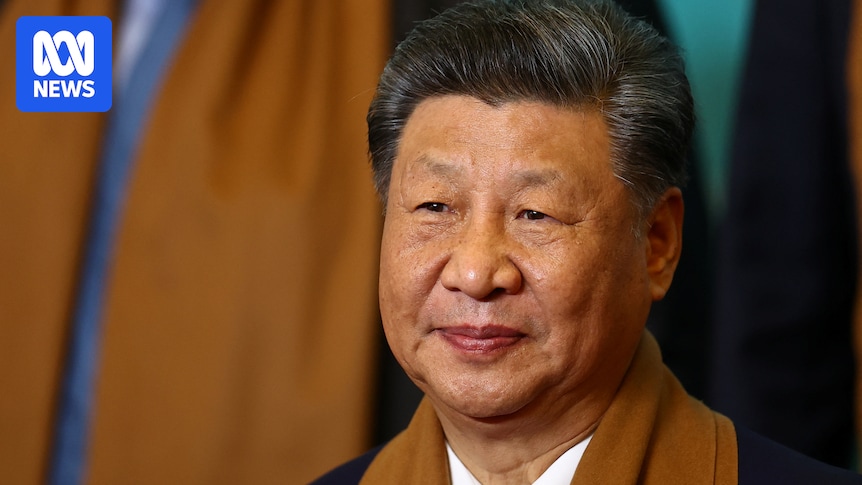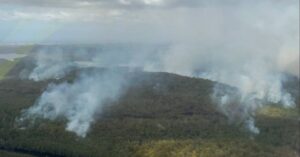
China’s rise in the Pacific is not merely a tale of aid and diplomacy; it is a strategic maneuver for survival and power. As domestic demand wanes and Western tariffs constrain exports, Beijing is compelled to channel its industrial surplus outward. The infrastructure projects spanning roads, mines, and ports across the Pacific are underpinned by a pressing necessity: China has more factories than buyers.
The growth targets of China remain tethered to state-owned enterprises and central planning bodies, even as the nation faces an aging population and diminishing global demand. In response, Beijing has identified a new frontier—the Pacific—a region abundant in resources, politically fragmented, and open to swift results. This arena offers both economic relief and geopolitical leverage.
What might appear as generosity is, in reality, a calculated strategy to convert China’s domestic vulnerabilities into global influence. Industrial overcapacity at home morphs into infrastructure diplomacy abroad. A system rooted in control turns advantageous where bureaucracy hinders progress. China’s decades of experience in poverty reduction and effective storytelling in the developing world further bolster its approach.
Beijing’s New Model
In August, Solomon Islands Prime Minister Jeremiah Manele lauded the expansion of the Gold Ridge Mine as “the beginning of a new chapter.” This SBD $6 billion ($1.1 billion) investment is set to triple the mine’s capacity and, according to Manele, transform the nation’s economy. The forecast is ambitious: approximately SBD $7.5 billion ($1.4 billion) in annual revenue, SBD $2 billion ($370 million) to government coffers, and over 4,000 direct and indirect jobs.
Behind these headlines is Gold Ridge Mining Limited, a Chinese-backed firm that epitomizes Beijing’s Pacific strategy: build big, move fast, and maintain visibility. Before purchasing the mine, Director Gao Mingfeng took local village representatives to China to showcase what he described as “one of the world’s best gold-processing operations.” The delegation returned convinced that China could deliver where others had faltered.
This visibility extends beyond gold mines and infrastructure. Recently, a 340-tonne Chinese-built tunneling machine, nicknamed the “steel dragon,” embarked on a journey across the Pacific to join the Tina Hydropower Project near Honiara. Manufactured by PowerChina’s Hydropower No 9 Bureau, the 86-meter-long “Double Jing No. 1” will carve the underground tunnels for the Solomon Islands’ largest hydropower station—a project anticipated to supply 68 percent of the capital’s electricity needs.
These exports of heavy machinery illustrate how China’s industrial overcapacity finds purpose abroad, sustaining production lines at home while symbolizing Beijing’s commitment to partnership.
Why China is Winning
Beijing’s influence is palpable not because it offers more but because it operates faster, demands less—aside from isolating Taiwan—and ensures its presence is felt. Chinese state-owned enterprises function as extensions of the party-state, capable of mobilizing finance, labor, and approvals without years of parliamentary wrangling. They thrive in environments where governance is uneven and relationships are as crucial as rules.
China’s state-owned enterprises are no strangers to corruption; they have learned to navigate it. For local leaders, this flexibility is attractive. Unlike Australia or the United States, which tie support to transparency or human rights benchmarks, China focuses on deliverables—ports, roads, stadiums, mines. The work gets done, ribbon-cuttings follow, and influence solidifies.
Beijing has also been strengthening security ties, hosting the fourth Ministerial Dialogue on Law-Enforcement and Police Cooperation with Pacific Island countries. Ministers from Fiji, Solomon Islands, Tonga, Kiribati, Vanuatu, Samoa, Nauru, and Papua New Guinea convened in Jiangsu province to discuss closer policing links and “professional, efficient, friendly” cooperation.
This meeting underscores how China now frames its Pacific relationships not only in economic but also in security terms. While Western capitals concentrate on defense alignments, Beijing’s narrative emphasizes “shared development.”
At the celebration of six years of diplomatic relations in the Solomon Islands, China’s ambassador Cai Weiming praised the “deepening friendship” between the two nations and reiterated Beijing’s role as a “responsible major power”—one that builds infrastructure, not divides alliances.
However, every infrastructure project carries a political purpose, with the long game being UN votes and the gradual isolation of Taiwan. The Pacific, despite its small size on a map, holds significant diplomatic weight with around a dozen UN member states scattered across its islands.
This strategy was reinforced when Vice-President Han Zheng met PNG Deputy Prime Minister John Rosso in Beijing. Han pledged to “elevate” a comprehensive strategic partnership and expand cooperation in trade, infrastructure, and climate adaptation, while Rosso reaffirmed Papua New Guinea’s “one-China” position.
Prosperity and Unease
China’s rapid pace comes with a cost. In the Solomon Islands, community elder Stanley Vatiande warned that the Gold Ridge tailings dam “could break at any time if a disaster strikes”—a genuine concern in a country prone to floods and earthquakes. This tension is evident in many Chinese-backed projects: jobs and infrastructure on one side, environmental risk and social unease on the other. Prosperity today, uncertainty tomorrow.
For Australia and the US, the Pacific is no longer a comfortable backyard; it is a battleground of credibility. Canberra promotes “Pacific family” values and governance reform, while Washington emphasizes defense cooperation. Beijing counters with visible transformation. In regions where development has been slow and uneven, a new road can carry more political weight than a promise of reform.
Simultaneously, Beijing is repositioning itself as a climate leader—a message designed to resonate across the islands. In late September, China announced new emissions targets: a 7–10 percent reduction from peak levels by 2035, non-fossil energy to exceed 30 percent, and wind and solar capacity to rise to six times the 2020 level.
The signal to Pacific partners was clear—China is not just a builder but also a global climate problem-solver. Whether and how Beijing can achieve that goal remains an open question.
China’s Pacific strategy works because it turns necessity into advantage. Yet, the same visibility that builds trust could also undermine it. If projects like Gold Ridge and the Tina Hydropower Station deliver growth while managing environmental risk and community consent, Beijing’s model will embed. If they do not, the very visibility that fuels its influence could erode it.
For Pacific nations and China, the responsibility now lies not in grand ceremonies but in how the roads hold, how the revenues are shared, and how communities are heard.






